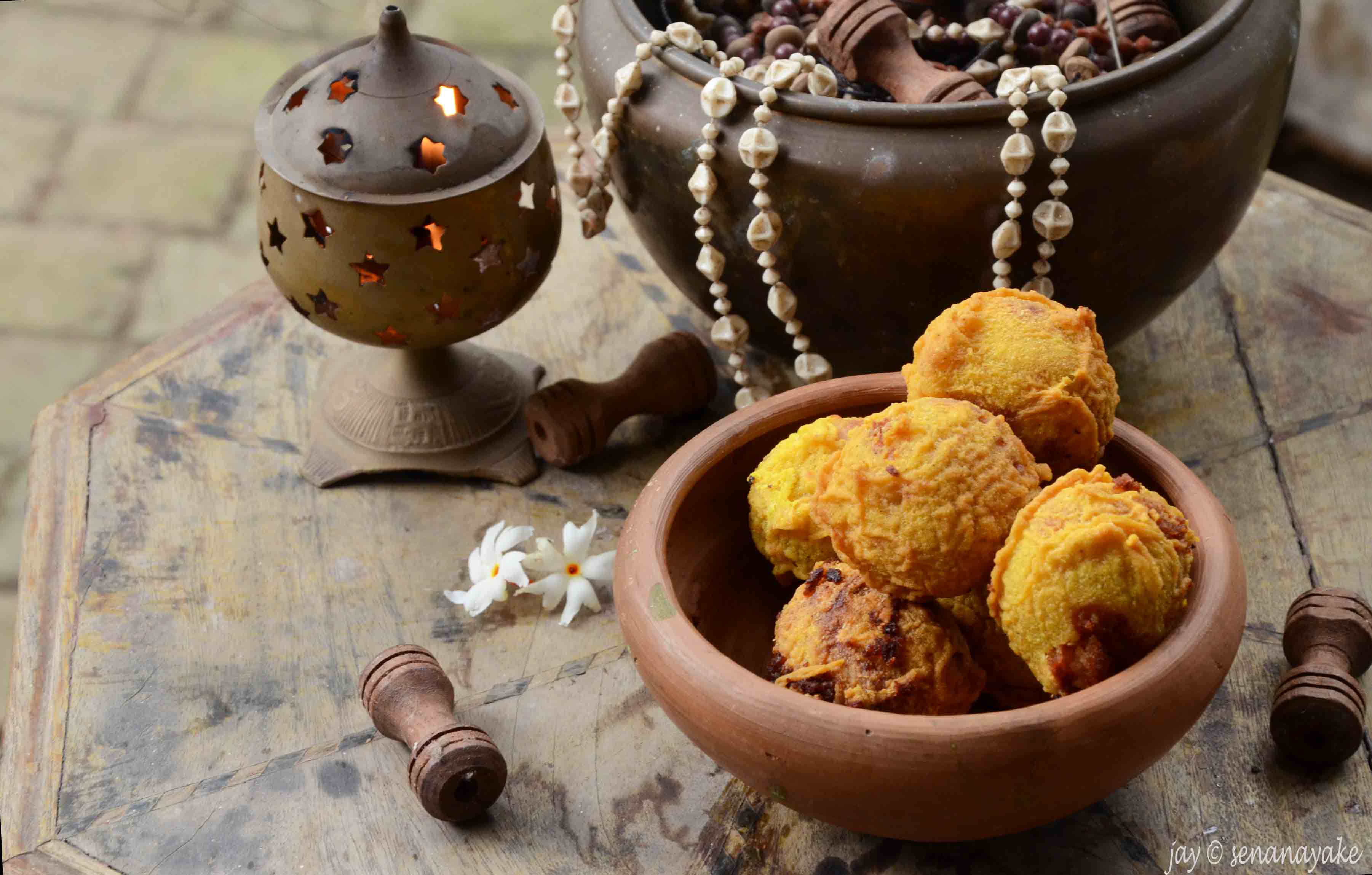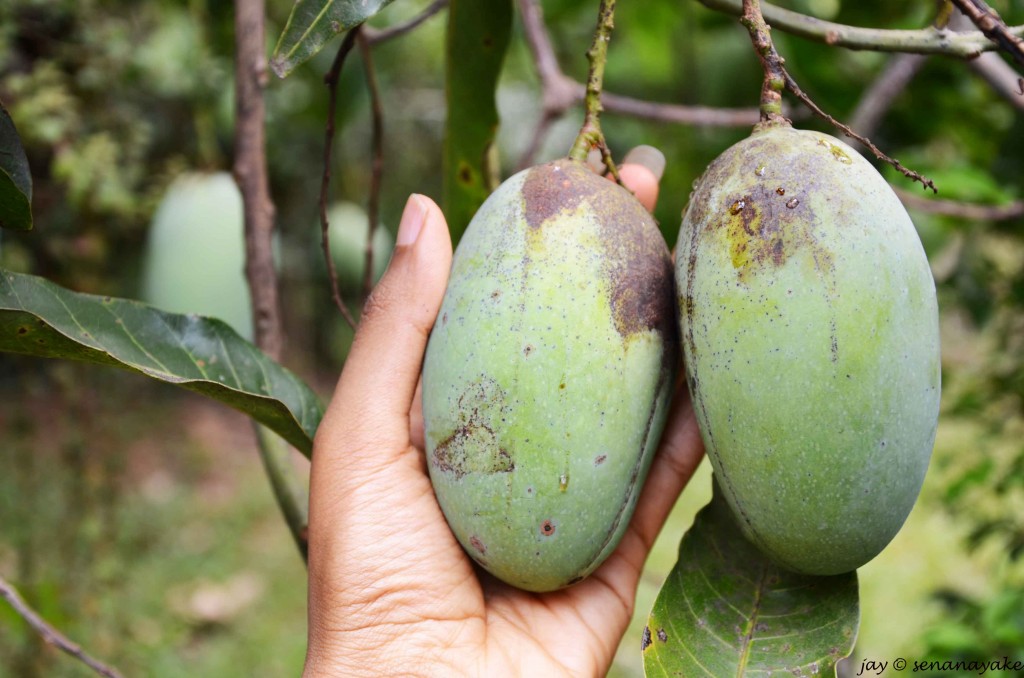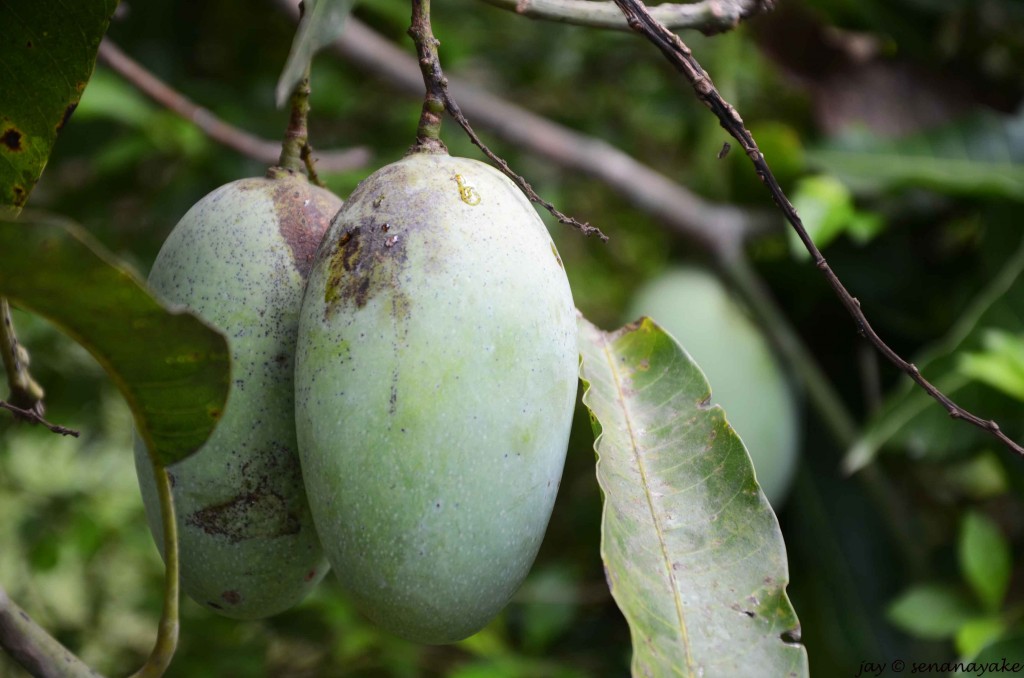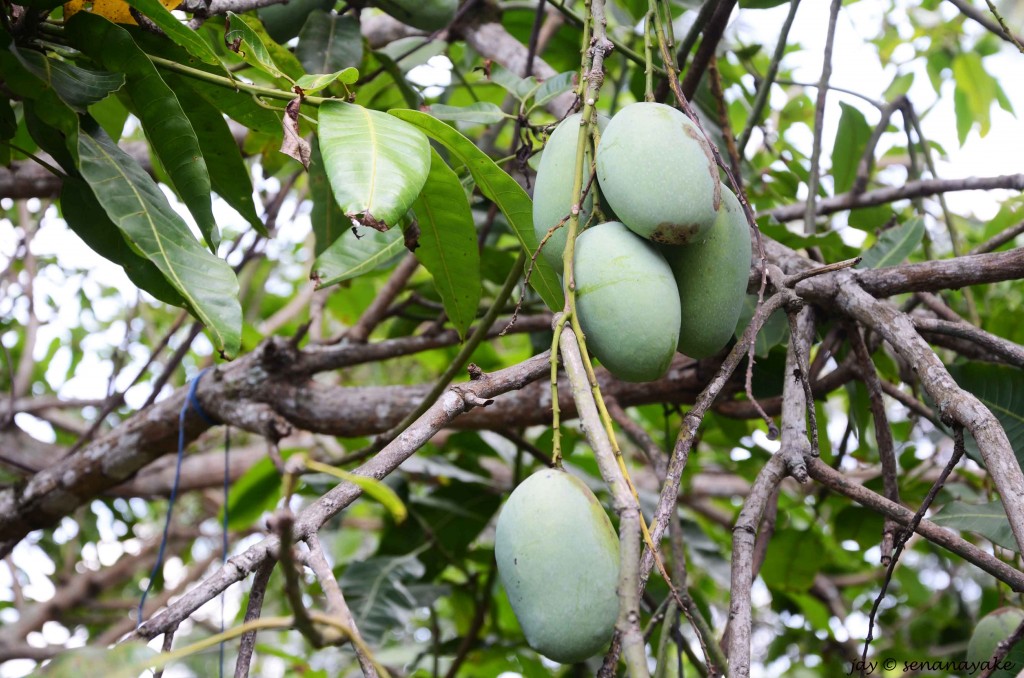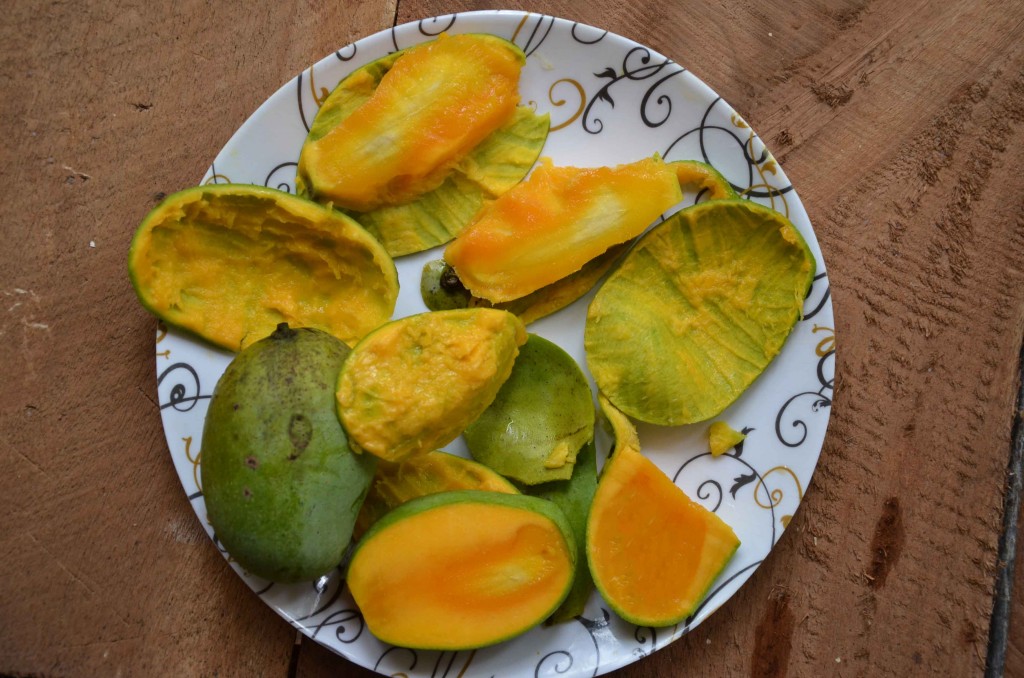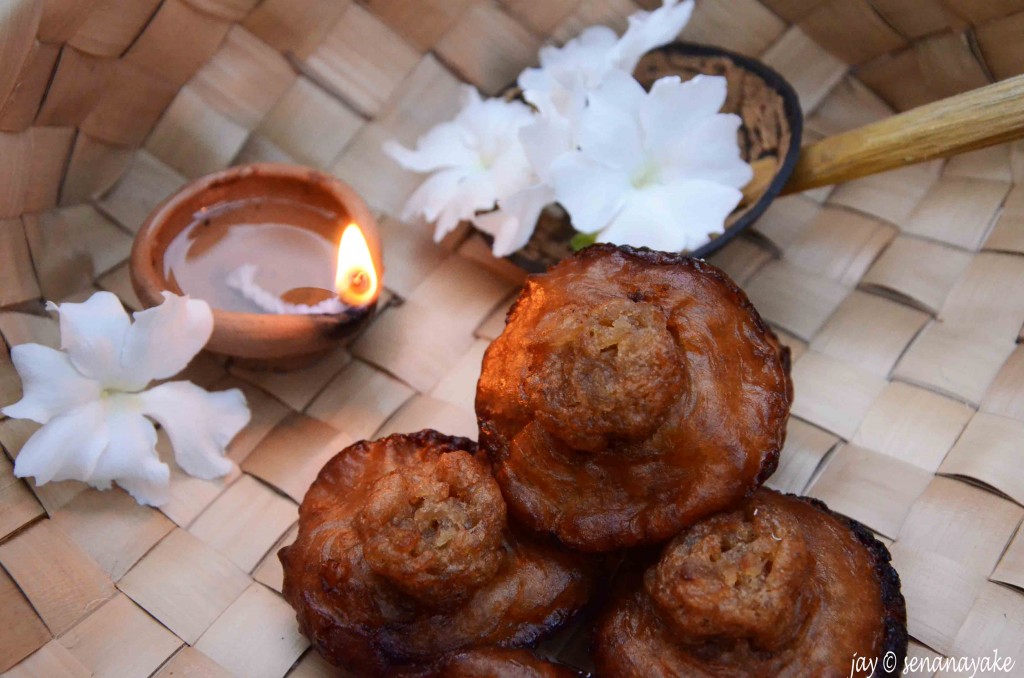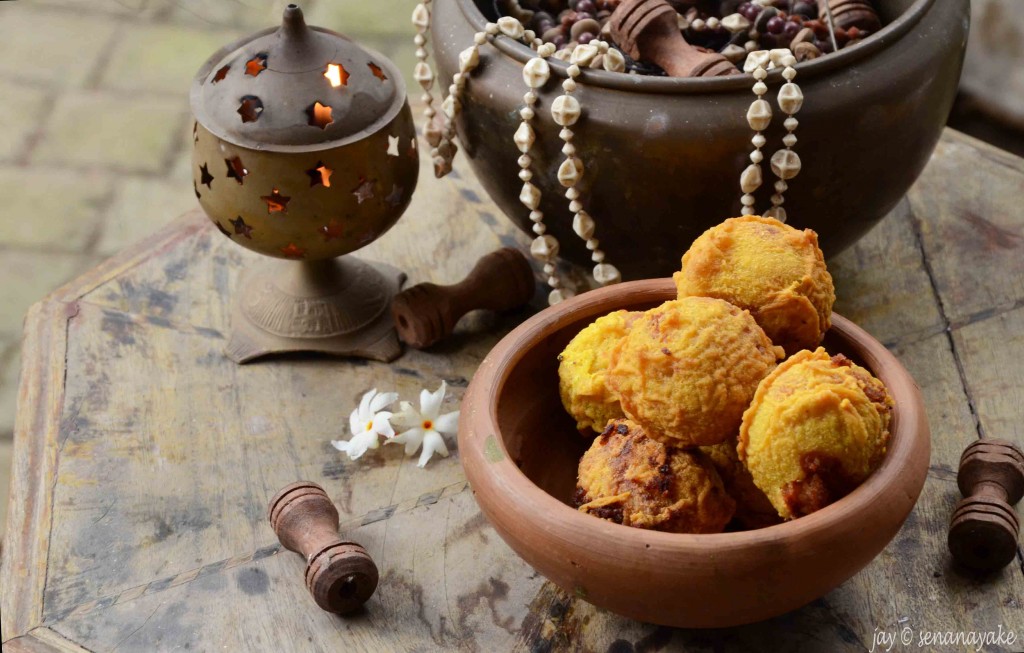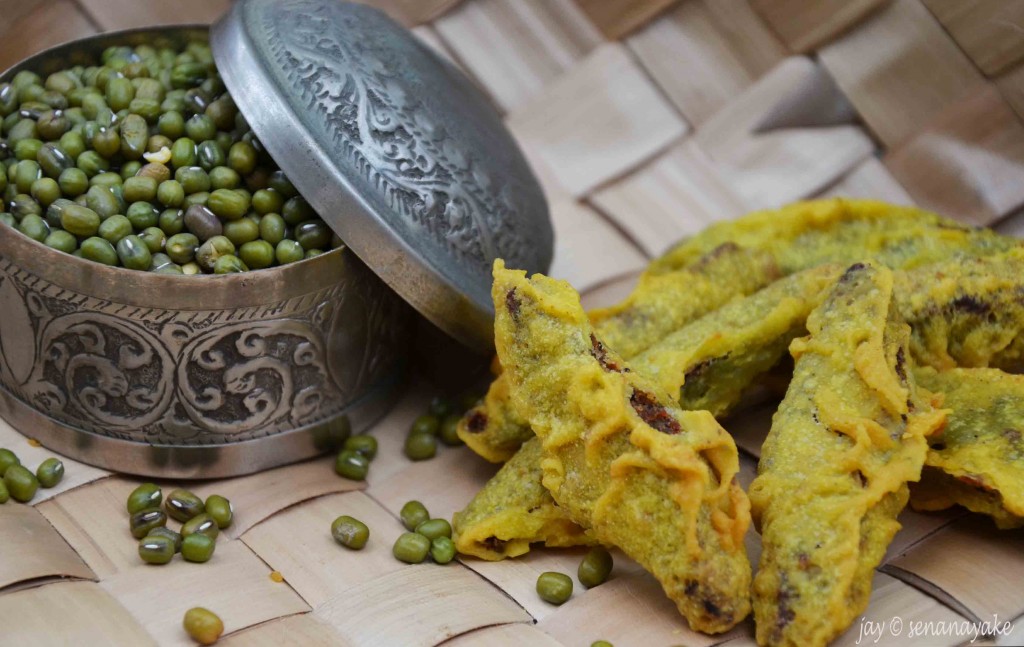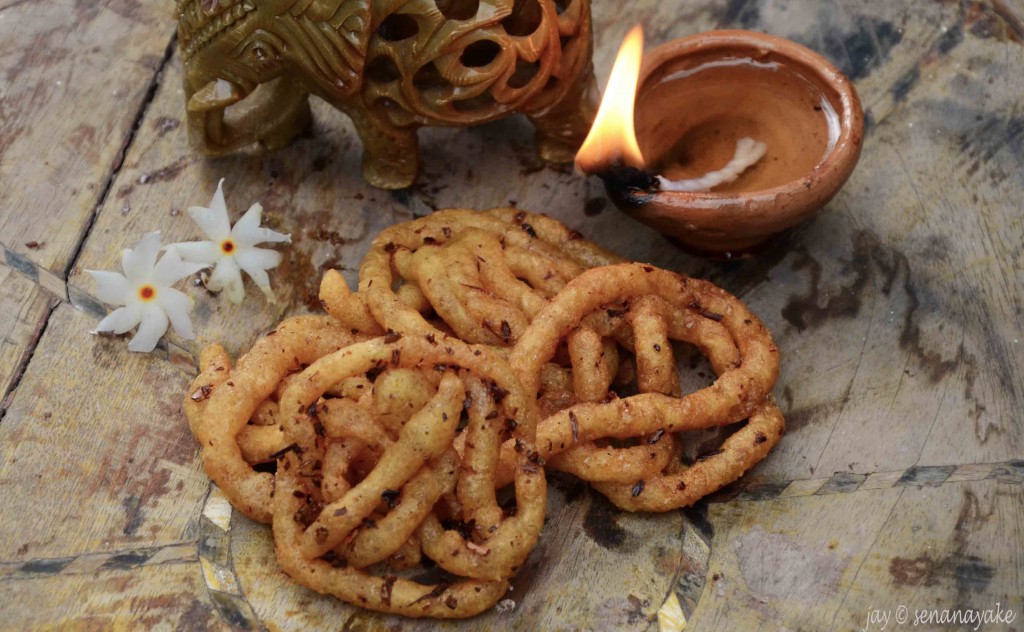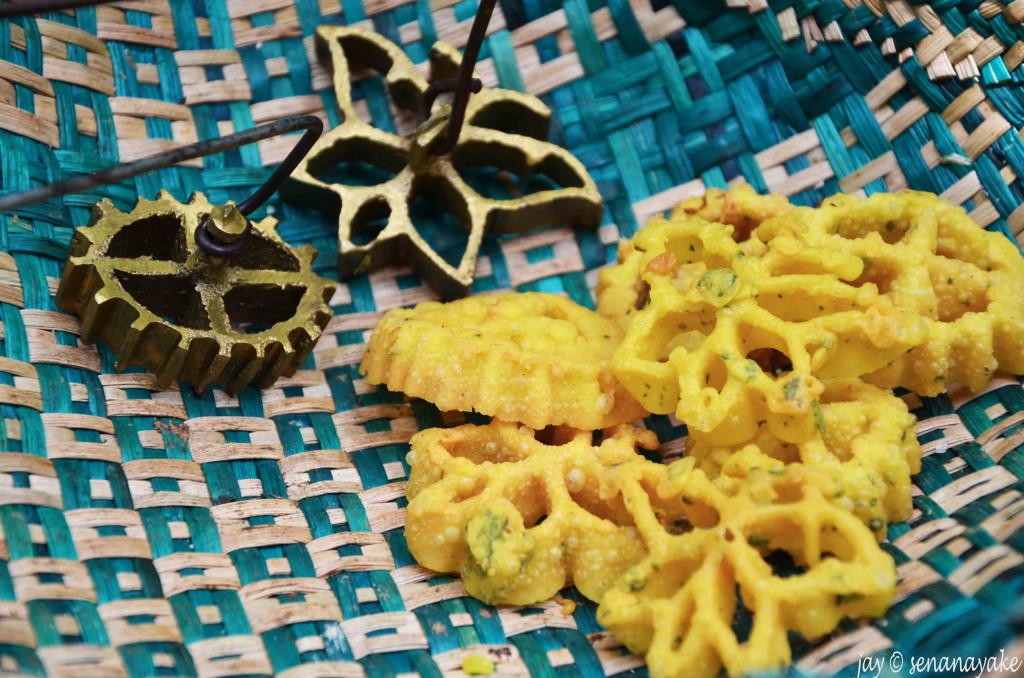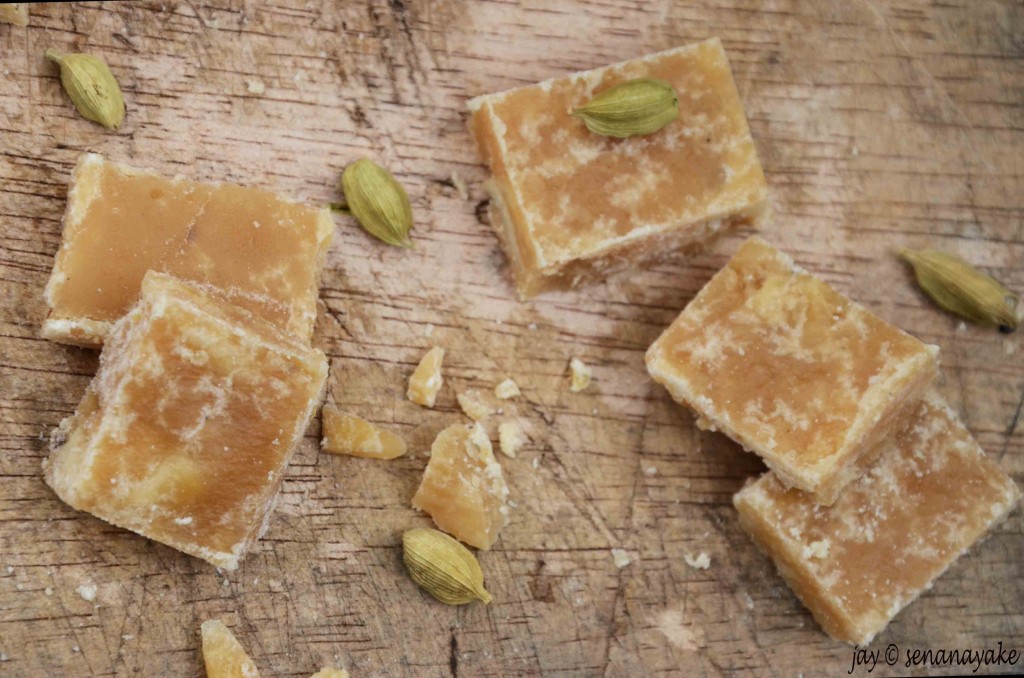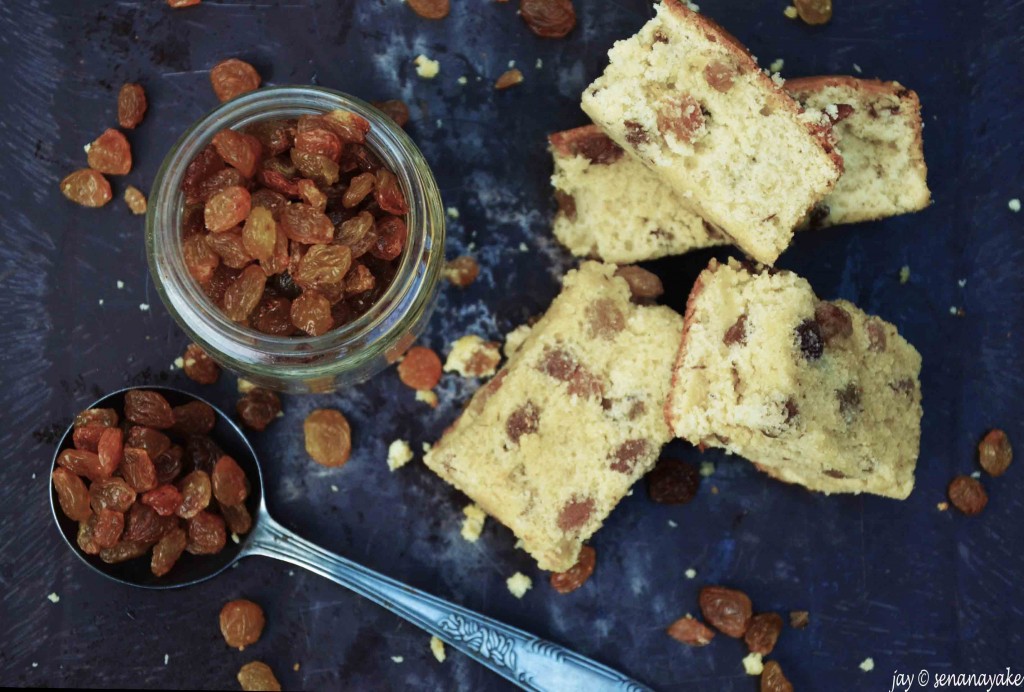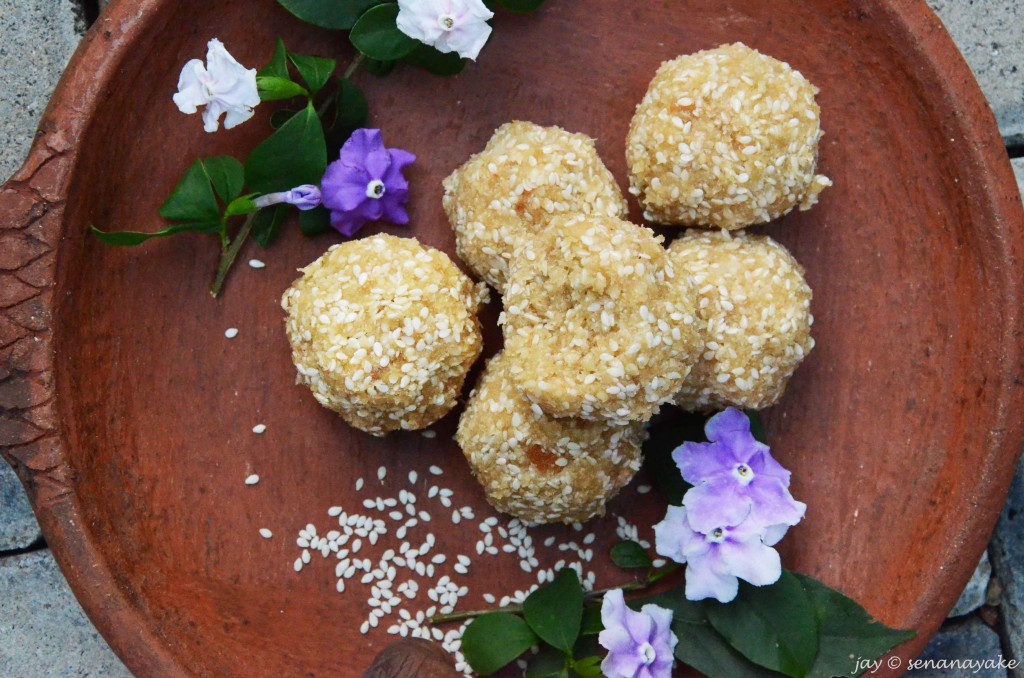Step on to the streets and you could see that not only the people, but also nature is getting ready for the Sri Lankan New Year. The mango trees are heavy with fruit and we pluck them by the hand and spend these sweltering hot afternoons eating mangoes on the veranda. Sweat trickling down our backs and mango dribbling down our chins, laughing despite ourselves and the intense humidity that takes us all.
- We pick our mangoes by hand these days
- Ripening up for plucking
- Mango trees are laden with fruit
There is a certain festivity in the air, the kind that is evoked by bubbling oil pots on the stove, oil cakes frying and cakes rising in the oven. Men and women are examining combs of banana for ripeness, new clay pots for boiling milk at the auspicious hour and larger pots for cooking the milk rice in which gives it this beautifully earthy and sprightly flavour, the freshest fish for ambul thiyal and buying new clothes for the New Year. Little children surround little stands that sell fire crackers, sparklers and Catherine wheels and adults fill the produce shops looking for the best rice, the best rice flour and basically, the very best of everything to welcome the New Year. It’s easy to get caught up in this vibe and I found myself too being carried away by the excitement. You could literally cut the energy with a knife.
The Sinhala and Tamil New Year commonly referred to as the Sinhala Aluth Avrudda is the biggest festival of Sri Lanka, synonymous with the Chinese New Year, the Thai New Year and the many New Year celebrations that are celebrated around the globe. Falling on the 13th and the 14th of April every year, this is the time that has been astrologically defined as the Sun travelling from the House of Pieces to the House of Aries (Meena Rashiya to Mesha Rashiya). During this time, everything happens at an auspicious time – the start of cooking, eating, starting work for the New Year and etc which means basically the whole country, does these things at the exact same time. Talk about unifying a nation! Methinks this is very cool.
Now an essential part of the Sinhala & Tamil New Year is its food. Without the food basically, there would be no New Year. The traditional seasonal sweets of Avrudu are ingenious recipes that have been perfected over millennia by our grandmothers and their grandmothers before them and usually at Avrudu time the kitchen would be the busiest place with the pounding new rice into flour with mortar and pestle and the scorching sound of wet batter hitting hot oil as mothers would sit molding the ‘konde’ of the konda kevum over an open fire and cutting Aluwa on large wooden platforms several feet long. The tradition was to make enough sweets for the entire village and then to exchange plates with the neighbors and friends filled with homemade sweetmeats prepared by hand. But with the emergence of the fast food culture where everything is available for sale, the necessity of making these from scratch right at home has been neglected. One simply pops prepackaged Avrudu sweets into one’s trolley at the supermarket and it is done. What’s the fun in that!
The exchanging of plates, filled with Avrudu sweetmeats, usually homemade is something that we as children looked forward to every year. But now most of the time, when you send out a plate what comes back is a packet of biscuits or a store-bought cake covered with a fancy napkin and my heart weeps every time this happens. People just don’t bother with these traditions anymore and some would often opt to skip Avrudu altogether and go on trips taking advantage of the holidays. This I think is an utter tragedy. And as a result, the much cherished recipes of Avrudu sweetmeats are disappearing and nobody knows how to make a descent konda kevum anymore.
My first Avurudu as a married woman and the pressure is on!
This Avrudu is going to be at hubby boy’s place. New bed spreads, pillow cases have been bought, washed and are being spread while cleaning is still underway. The cake has already done and so is the Naranga Kevum with other delicacies still in different stages of making. It’s kind of exciting really, this thought of starting over, a new life, making everything absolutely perfect for the New Year.
As I am made to understand, hubby boy’s family had never been too big on Avrudu whereas our household has been exactly the opposite. We go out all guns blazing (rather thel thachchi) on Avrudu just as we would for Christmas and any other occasion that would be celebrated with the glory of food. We would build a small fire in the middle of the living room, symbolizing a new hearth, and mother would boil a pot of milk on it for prosperity at the auspicious time. Then would begin the cooking of the milk rice and the hasty preparing of the Avrudu table and we would pile up the food and sit down to eat at the auspicious hour looking towards the auspicious time. That day seems special. All the traditions, the customs observed engraved heavily on the mind from when I was a child.
This year, I have only just started on the traditional fare. This is usually the time of the year when mother and I stand side by side over the stove molding kevum and deep frying kokis and basically filling the whole house with that uniquely special Avrudu perfume. Mother says she misses me. I can only imagine how much. But not as much as I feel her absence here to offer constant advice and to lend more than just a helping hand.
Last year and this year- so much has changed. What I made with mother last year, I must make by myself this year. And here is what I am planning to make this time.
Konda Kevum
This has to be the very symbol of Avrudu itself. Made with rice flour, rich kithul treacle and Sri Lankan spices, the batter is deep fried and the ‘konde’ formed over a bubbling pot of oil. The inside is moist and rich while the outside is crunchy and caramelized and is a lovely deep brown colour that is appealing to the eye. Here is a recipe that has been passed down in the family which my mother has enhanced and perfected to deliver the best flavour for the taste buds.
Narang kevum
I just finished making these yesterday. A regional sweet unique to the south coast of the island, my mother, also from the south coast makes these as if she has been making these her whole life, which she probably has. I have modified the recipe a little bit to make it even more delicious so try your hand at these coconutty delights this Avrudu.
Mung Kevum
This is probably the healthiest of the lot. Made from mung bean paste, rice flour and rich brown treacle, it sports a moist and rich middle and a crunchy and slightly salty outer coating. Its quite easy to make too and completely gluten free and vegan.
Pani walalu
Another regional specialty springing forth from the Kandyan kingdom, I have tasted what people refer to as the “best pani walalu in Sri Lanka” and I must say, they are a mile and a half away from the utterly divine pani walalu that this recipe produces. This is my mother’s recipe, untempered with because honestly, this must be the king of all Pani walalu! And I speak responsibly because I have a long history with Pani Walalu from around the country.
Kokis
If you have a good kokis mold, this one’s a breeze. Just dip it in a rice flour and coconut milk batter and you produce golden and crispy kokis that you can probably munch away to your heart’s desire. Probably the most popular of the Avrudu sweets as this caters to the not-so-sweet-loving palate as well.
Potato fudge aka Ala toffee
My father’s favourite. Every Avrudu we end up boiling and mashing kilos and kilos of potatoes and then mixing it with sugar and spice to produce this incredible potato based sweet. Methinks this is the easiest of the lot and with a few cashews sprinkled over the top, it can be quite extravagant too!
Cake
Although not a “traditional” Avrudu sweet, cake has sneaked onto the Avrudu table and has settled in quite comfortably there. If you are interested, here is a simple cake that you can make right at home. I already made this for the New Year and it is resting quite snugly in my cake box back at home.
Sesame rolls
As Sri Lankans, we completely ADORE our sesame rolls and it usually finds its way on to the Avrudu table as well. so instead of just grabbing a pcket off the shelf in a supermarket, why not try your hand at making it right at home sans the preservatives and full of natural goodness, not to mention the taste!
Time to get cracking and only limited time left! I am not being too ambitious this time as I am still learning the ropes but it’s always good to have a goal.
And here’s early Avrudu wishes coming your way – May you have the most prosperous year ahead filled with your table always brimming over with good food and your halls resounding with laughter all year round.
What is your Avrudu wish this season?

